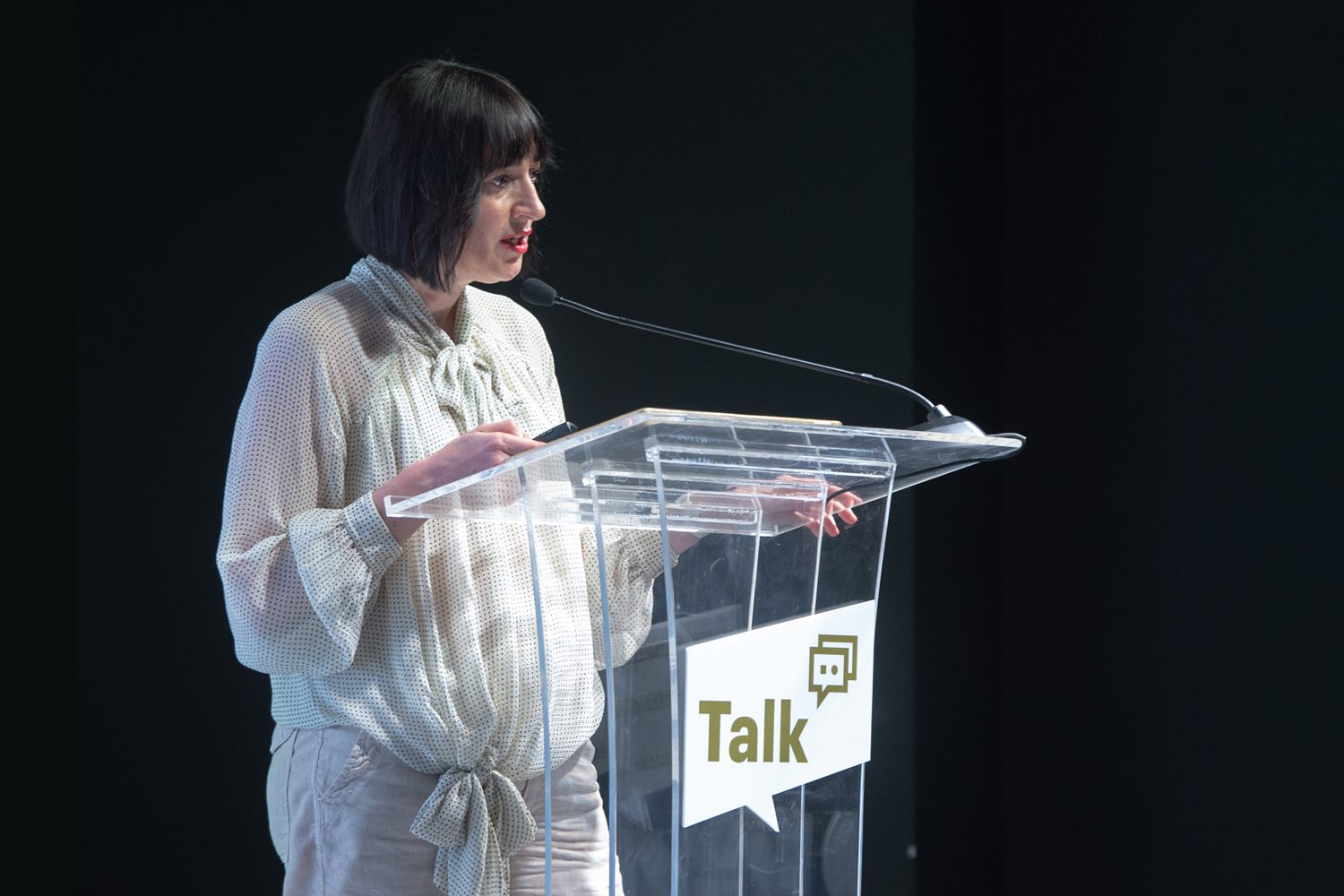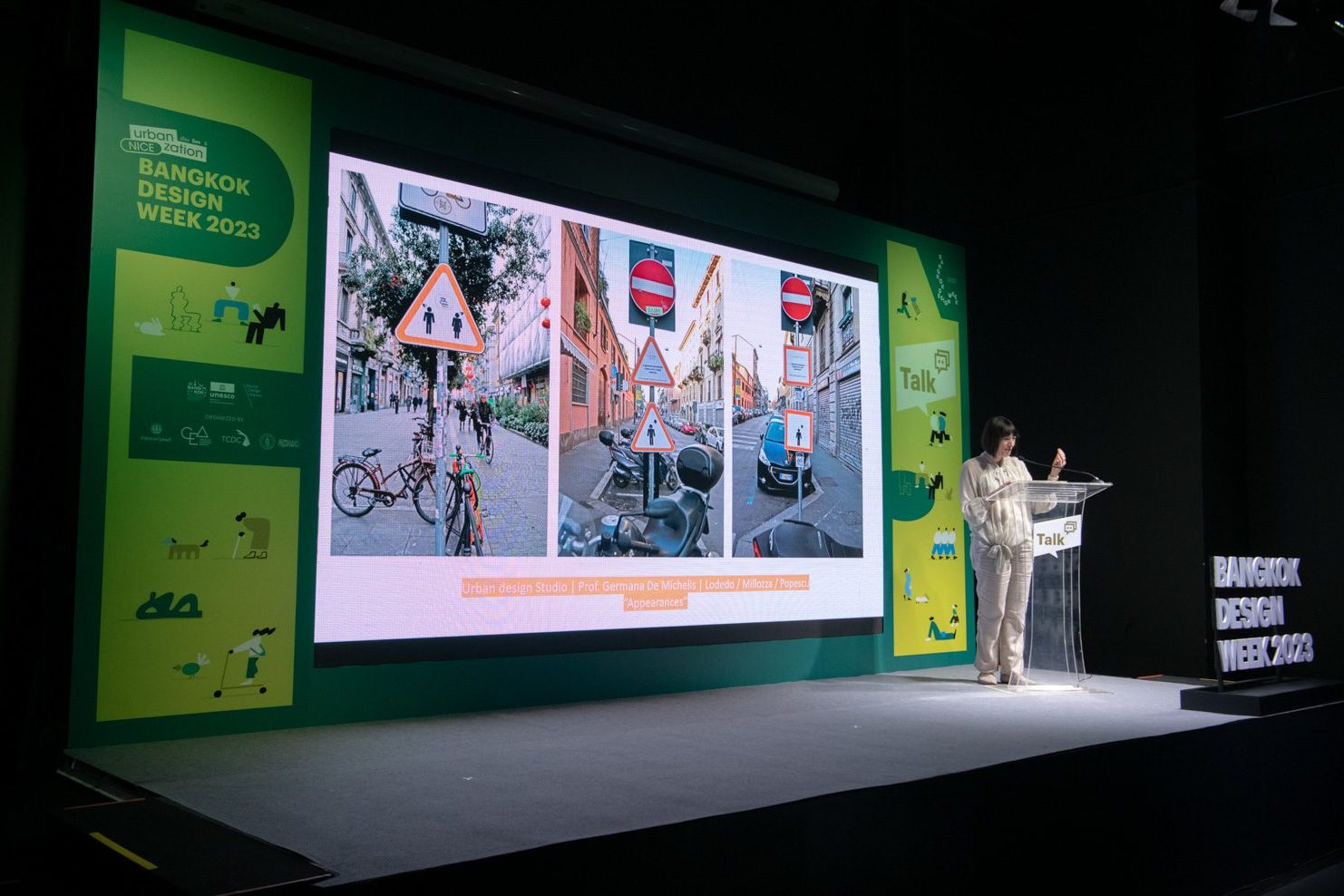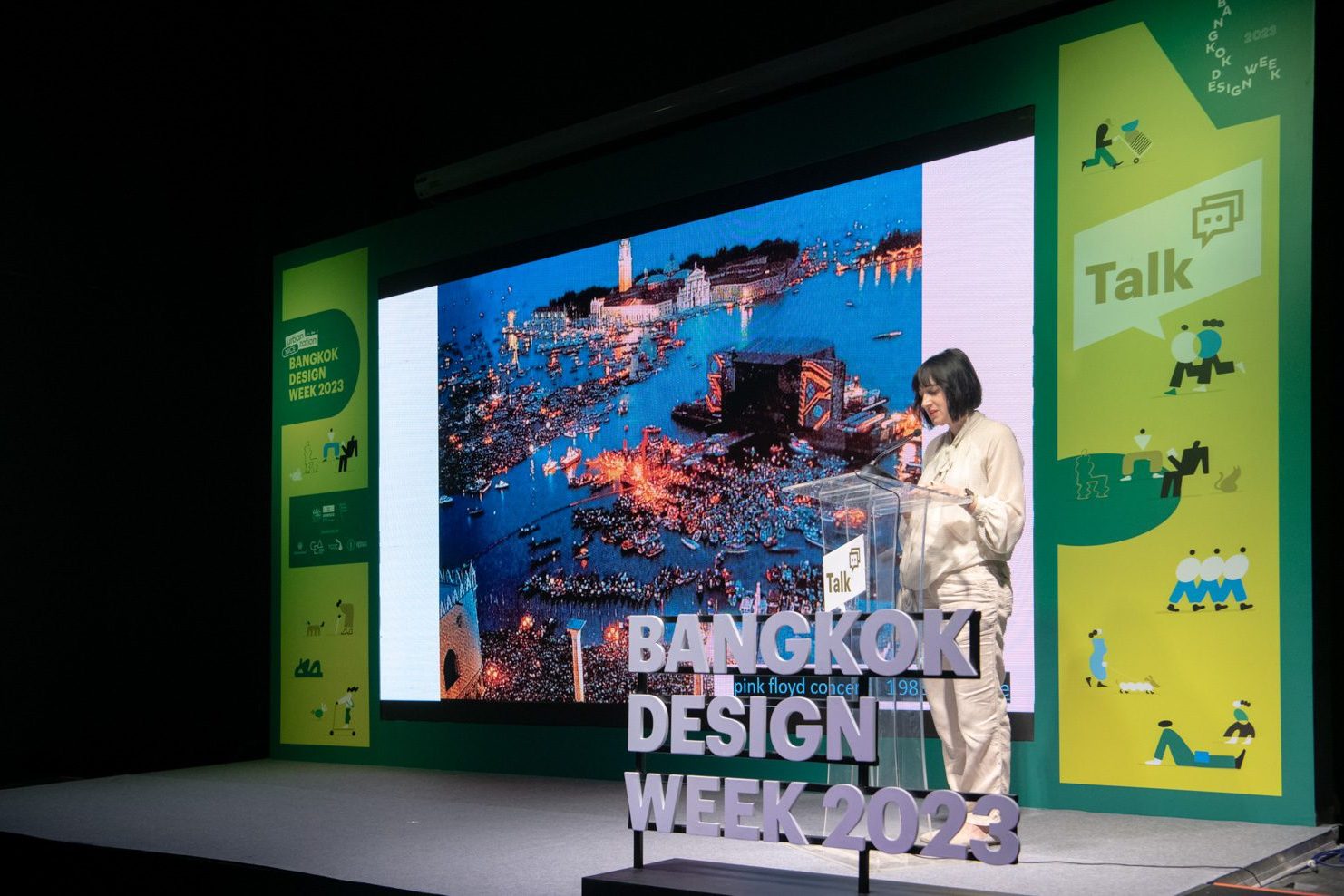SPEAKING WITH ELISA POLI, THE HEAD OF THE RESEARCH CENTER & INNOVATION HUB FROM NABA, ON HOW WE CAN CREATE A LIVABLE CITY WITH SMALL DELIGHTFUL URBAN INTERVENTION
TEXT: PRATCHAYAPOL LERTWICHA
PHOTO COURTESY OF CEA
(For Thai, press here)
We used to believe that a good city could be created through the collaborative efforts of a group of talented architects and urban planners. However, as the world changes and problems become more intense, challenging, complex, and, at times, unprecedented, such as pandemics and catastrophic natural disasters, the same old approach of a bunch of people brainstorming and working things out inside a boxy room may no longer be able to provide us with all of the answers and solutions we are looking for.
Several lectures and activities at the recently concluded Bangkok Design Week 2023: URBAN ‘NICE’ ZATION encouraged people to rethink and reimagine how cities could be developed. The lecture by Elisa Poli, the head of the Research Center and Innovative Hub Unit of NABA: Nuova Accademia di Belle Arti, Italy’s number one fine arts school according to QS World University Rankings®, was one of the events on the program. Poli’s special lecture, “From services to the city: how social behaviors transform urban quality,” was jam-packed with inspiring and amazing ideas in urban development proposed by NABA’s Master of New Urban Design students.
Instead of grand masterplans, the ideas presented in the lectures were small projects that intervene and have fun with urban spaces, such as the spatial design for people to enjoy their time while waiting for the train or the installation of infographic signs in Milan’s Chinatown district where Italian and Chinese users can read the provided content despite their different cultural and linguistic backgrounds.
We couldn’t help but wonder after hearing the lecture about the reasons and rationales behind NABA’s Master in New Urban Design program’s trajectory that has led to their students creating these projects. It piqued my interest in learning more about NABA’s Master in New Urban Design program and what makes it so special. To find out the answers to these questions, we met with Elisa Poli after her lecture for a brief but informative discussion.

Elisa Poli, the head of the Research Center and Innovative Hub Unit of NABA (Nuova Accademia di Belle Arti)
art4d: We saw the projects from NABA’s Master in New Urban Design program that you presented in the lecture, and they were urban interventions in the form of small-scale design creations rather than masterplans, as many people are used to seeing. Why is NABA’s Master of New Urban Design program focused on encouraging students to pursue projects of this nature?
Elisa Poli: We believe that urban developments carried out according to meticulously crafted plans are incapable of adapting to and accommodating changes in the environment and people’s lives. They’ve become ineffective. What we’re looking for are solutions that are adaptable and capable of dealing with all of these varying and constantly changing environments and contexts. Especially now, when we are dealing with unprecedented healthcare threats such as the COVID-19 pandemic as well as the rapid pace with which cities are changing. Experimenting with new and flexible ideas and concepts is critical.
We also want our students to try new things by making short-term changes, and truly getting to know and experience people in a community so that they can understand their needs, taking their work and testing it at actual sites, and receiving feedback from real people living in the area and community.
This design approach stems from the bottom-up process (the management approach that views a problem from the perspective of workers at the operational level to the executives’ level), which we regard as an important skill for urban designers because a good urban designer must be able to collaborate with community members.

art4d: Aside from the fun projects for students, what else distinguishes NABA’s Master in New Urban Design program?
EP: There are many aspects of our Master in New Urban Design program that I believe are novel. We emphasize learning about urban design through other disciplines and domains, such as anthropology, sociology, and psychology, as well as encouraging students to work together with people from various backgrounds, such as philosophers and social activists, to broaden their perspective on urban design. Not only that, but we’re interested in designs for animals and other living species because the world has become more interested in design that isn’t solely focused on humans.
Another important aspect of the program is that students will not only be on the receiving end of the entire learning experience but will also be actively making changes. That is why we place such a high value on concrete actions and close collaboration with communities.

art4d: It appears that students who have completed this program are not among those urban designers who do all of their planning from their offices.
EP: That’s correct. This program is not intended for people who want to work for an architecture firm or an engineering firm, but rather for those who want to work for a non-profit organization that specializes in urban development or with expert specialists. This is due to the fact that this program does not solely focus on the professional side of the profession. Our students will learn about materials, how to make furniture for public spaces, and how to write proposals to request funding for an urban development project. This program incorporates multiple disciplines and exposes students to a wide range of future opportunities.

art4d: What makes learning at NABA special?
EP: NABA is an art and design school. We have programs at the bachelor’s, master’s, and short course levels in a wide range of disciplines, including Fashion Design, Interior Design, Product Design, Graphic Design (Visual & UX/UI Design), Creative Media Production (Film, Games, & Animation), and Visual Arts & Curatorial Studies.
We’re in Milan, which is a truly unique city. It’s buzzing with energy, events, exhibitions, art shows, and design showcases happening all the time, allowing you to meet designers and artists.
NABA also promotes and facilitates interdisciplinary collaborations among its students. Every year, we will host workshops for students from various departments to collaborate, and everyone is free to choose which workshops they want to attend. For example, we used to hold a sports/design workshop for first-year students, which was really interesting because sports is a part of our daily lives and we rarely see it being associated with design, cities, or other problems such as environmental issues. This helps our students develop an interdisciplinary mindset.
art4d: Why is having an interdisciplinary mindset important to NABA?
EP: It makes a person adaptable and flexible in different situations, as well as gaining the ability to see a bigger picture of something that is beyond the context in which they are a part of, which is critical to how a design can be created.
Another important mindset that NABA has been attempting to instill in our students is self-confidence and the desire to make positive changes. We live in a scary world because we are constantly bombarded with information. Our role is to encourage our students to turn their fear into a drive to make changes, to transform the overwhelming influx of information into long-term plans, and to make long-term changes that can truly help improve people’s lives. That is what NABA has been trying to do.

Find out more information on the program and application process of NABA, Italy’s number one fine arts school, at dp-education.com



